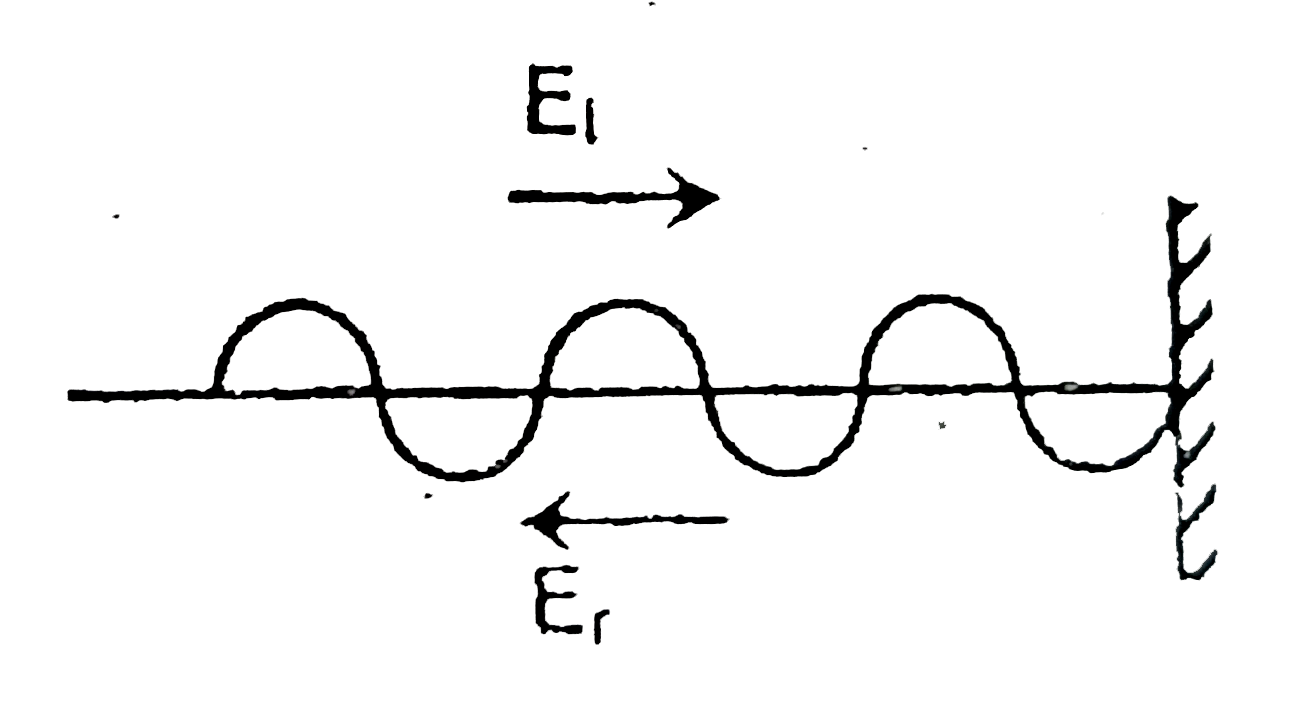A pulse of a wavetrain travels along a stretched string and reaches the fixed end of the string. It will be reflected back with
a phase change of 180∘ with velocity reversed.
the same phase as the incident pulse with no reversal of velocity
a phase change of 180∘ with no reversal of velocity.
the same phase as the incident pulse but with velocity reversed.
The correct Answer is:A
To solve the question regarding the reflection of a pulse from a fixed end of a stretched string, we can break it down into the following steps:
Step 1: Understanding the Situation
A pulse travels along a stretched string and reaches a fixed end. At this point, we need to analyze what happens to the pulse upon reaching the fixed boundary.
Hint: Consider what happens to waves when they encounter a boundary.
Step 2: Reflection at a Fixed End
When a wave pulse reaches a fixed end, it cannot move past the boundary. Instead, it gets reflected back. This reflection is characterized by a change in direction.
Hint: Think about how a ball behaves when it hits a wall.
Step 3: Phase Change
At a fixed end, the wave undergoes a phase change of 180 degrees upon reflection. This means that if the wave was initially moving upwards (positive displacement), after reflection, it will move downwards (negative displacement).
Hint: Visualize the wave before and after it hits the fixed end. How does the shape change?
Step 4: Velocity Change
When the wave reflects off the fixed end, its velocity is also reversed. This means that if the wave was moving in the positive direction towards the fixed end, after reflection, it will move in the negative direction away from the fixed end.
Hint: Remember that the direction of velocity is tied to the direction of the wave's movement.
Step 5: Conclusion
Combining the observations from the previous steps, we conclude that when a pulse of a wave train reaches the fixed end of a string, it will be reflected back with a phase change of 180 degrees and its velocity will be reversed.
Final Answer: The pulse will be reflected back with a phase change of 180 degrees and velocity reversed.
---
A pulse travels along a stretched string and reaches a fixed end. At this point, we need to analyze what happens to the pulse upon reaching the fixed boundary.
When a wave pulse reaches a fixed end, it cannot move past the boundary. Instead, it gets reflected back. This reflection is characterized by a change in direction.
At a fixed end, the wave undergoes a phase change of 180 degrees upon reflection. This means that if the wave was initially moving upwards (positive displacement), after reflection, it will move downwards (negative displacement).
When the wave reflects off the fixed end, its velocity is also reversed. This means that if the wave was moving in the positive direction towards the fixed end, after reflection, it will move in the negative direction away from the fixed end.
Combining the observations from the previous steps, we conclude that when a pulse of a wave train reaches the fixed end of a string, it will be reflected back with a phase change of 180 degrees and its velocity will be reversed.
Topper's Solved these Questions
- BOOK - NCERT FINGERTPS ENGLISHCHAPTER - WAVESEXERCISE - HOTS8videos
WAVES
- BOOK - NCERT FINGERTPS ENGLISHCHAPTER - WAVESEXERCISE - EXEMPLER10videos
WAVES
- BOOK - NCERT FINGERTPS ENGLISHCHAPTER - UNITS AND MEASUREMENTSEXERCISE - Assertion And Reason15videos
UNITS AND MEASUREMENTS
- BOOK - NCERT FINGERTPS ENGLISHCHAPTER - WORK , ENERGY AND POWEREXERCISE - Assertion And Reason15videos
WORK , ENERGY AND POWER
Similar Questions
Knowledge Check
- Question 1 - Select One
The speed of transverse wave on a stretched string is
Adirectly proportional to the tension in the stringBdirectly proportional to the square root of the tensionCinversely proportional to liveDinversely proportional to sqyare of tension
A pulse is propagating on a long stretched string along its length taken as positive x-axis. Shape of the string at t = 0 is given by y=√a2−x2when |x|≤a=0 when |x|≥a . What is the general equation of pulse after some time 't' , if it is travelling along positive x-direction with speed V?
View SolutionHow is the frequency of a stretched string related to:
Its length?View SolutionA wave frequency 100Hz travels along a string towards its fixed end . When this wave travels back after reflection , a node is formed at a distance of 10cmfrom the fixed end . The speed of the wave (incident and reflected) is
View SolutionA sinusoidal wave produced in a stretched string gets reflected and loses 36% of its energy in getting reflected from the fixed end of the string. Choose the correct statement from the
 View Solution
View SolutionA transverse sine wave of amplitude 10 cm and wavelength 200 cm travels from left to right along a long horizontal stretched, string with a speed of 100 cm/s. Take the origin at left end of the string. At time t = 0 the left end of the string is at the origin and is moving downward. Then the equation of the wave will be ( in CGS system )
View SolutionA travelling wave y=Asin(kx−ωt+θ) passes from a heavier string to a lighter string . The juction of the strings is at x=0. The equation of the reflected wave is
View SolutionA wave moves ar a constant speed along a stretched string.Mark the incorrect statement out of the following:
View Solution

